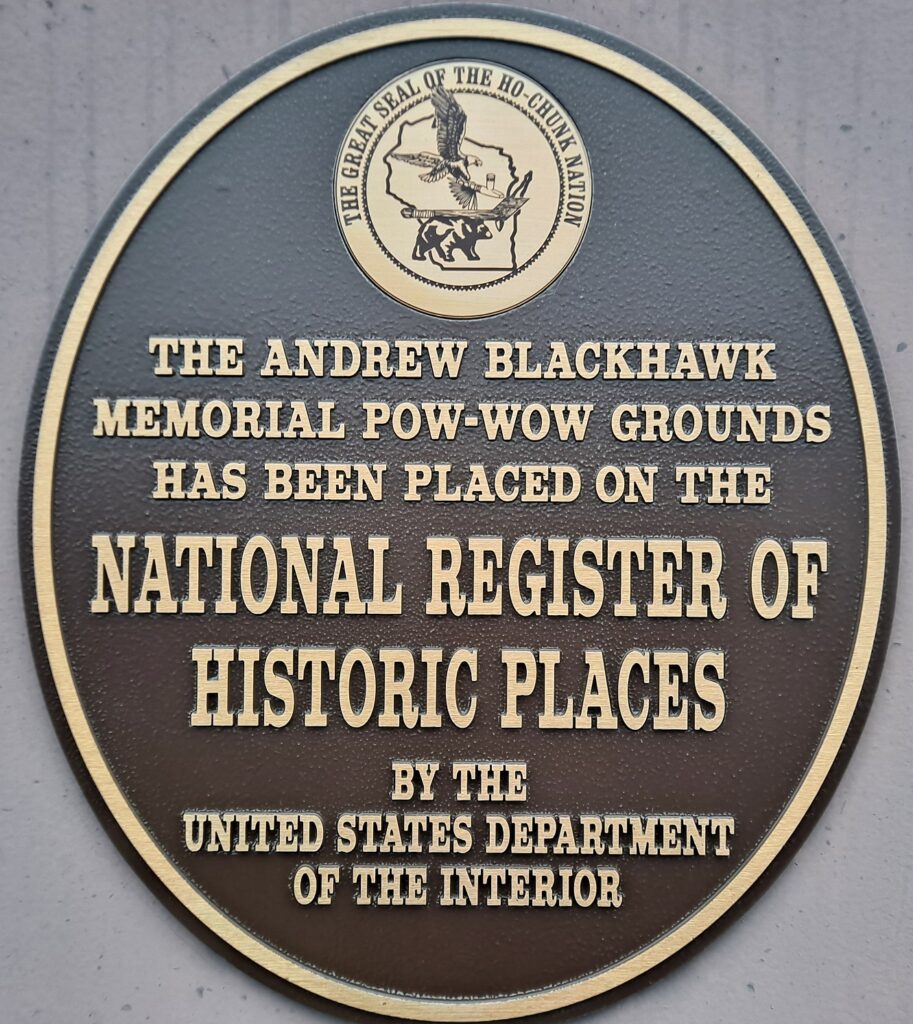Pow-wow Booth
A pow-wow1 is a celebration of American Indian culture in which people from diverse indigenous nations gather to dance, sing, honor the traditions of their ancestors,2 and to reconnect with old friends and make new ones. The first pow-wow was held in nearby Dexterville by local Ho-Chunk people in 1925, and was then moved to Pittsville’s Riverside Park in subsequent years, where it became an annual 3-4 day event. The Ho-Chunk found the natural amphitheater in the park (now a baseball field known locally as ‘the pit’) a perfect setting for traditional dances and ceremonies. It was hoped that pow-wows would bring Native Americans and area people to a better understanding of each other. Up to 500 Native Americans from throughout Wisconsin, Iowa, Minnesota, Nebraska, Oklahoma, Arizona, the Dakotas and Idaho participated. Tents and shelters were erected and fry bread, baskets and beadwork were offered for sale. Spectators and participants, including non-Native Americans, could number anywhere from 5,000-10,000 over the course of the weekend. Activities would also include dances with live bands, baseball games, and carnivals with rides, carnival games, concessions, food and more. Pow-wows continued annually in Riverside Park until 1968 when they were moved to another location on Ho-Chunk land. The pow-wow was invited back in 1987 as part of Pittsville’s Centennial celebration. You can find more history of the Pittsville Pow-wow in the book Yellow River Pioneers.
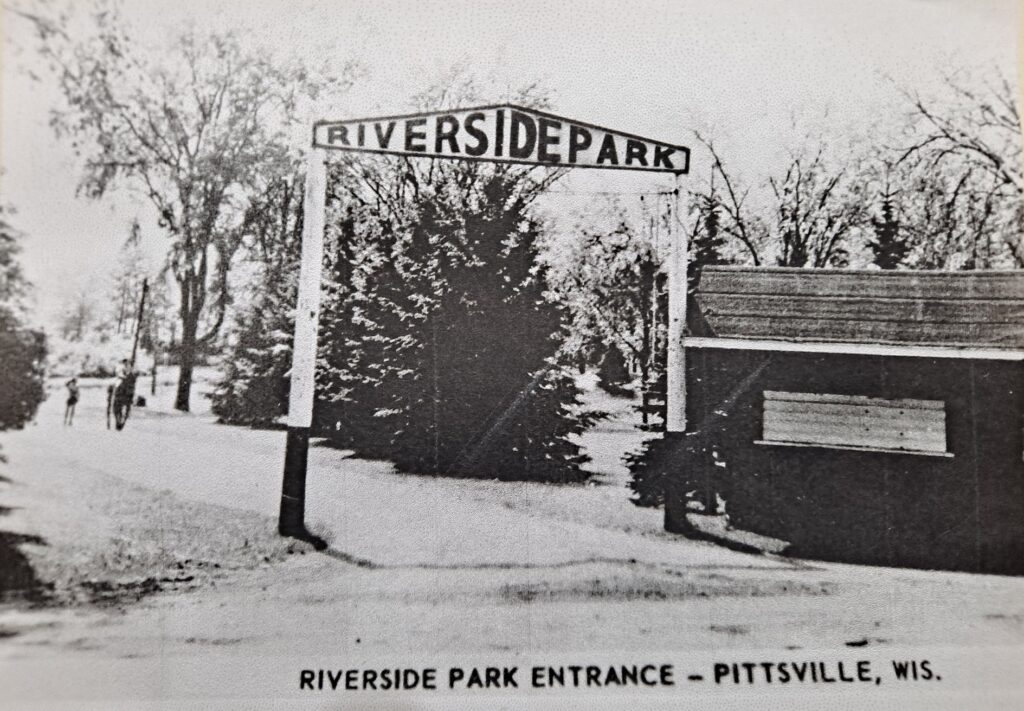
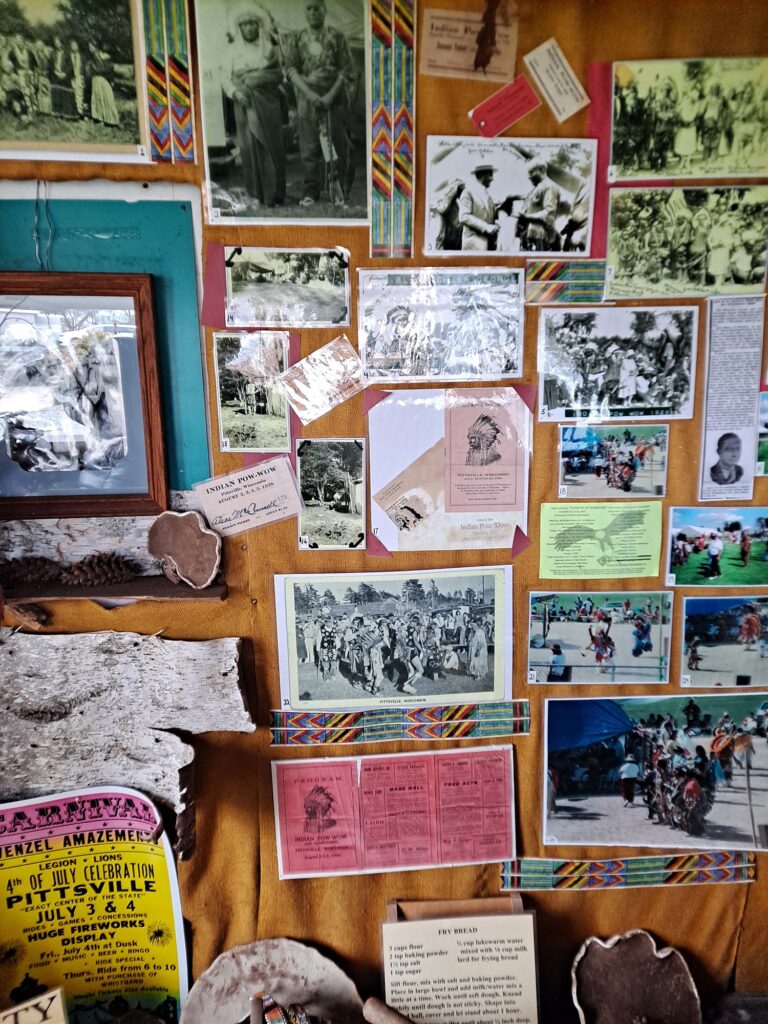
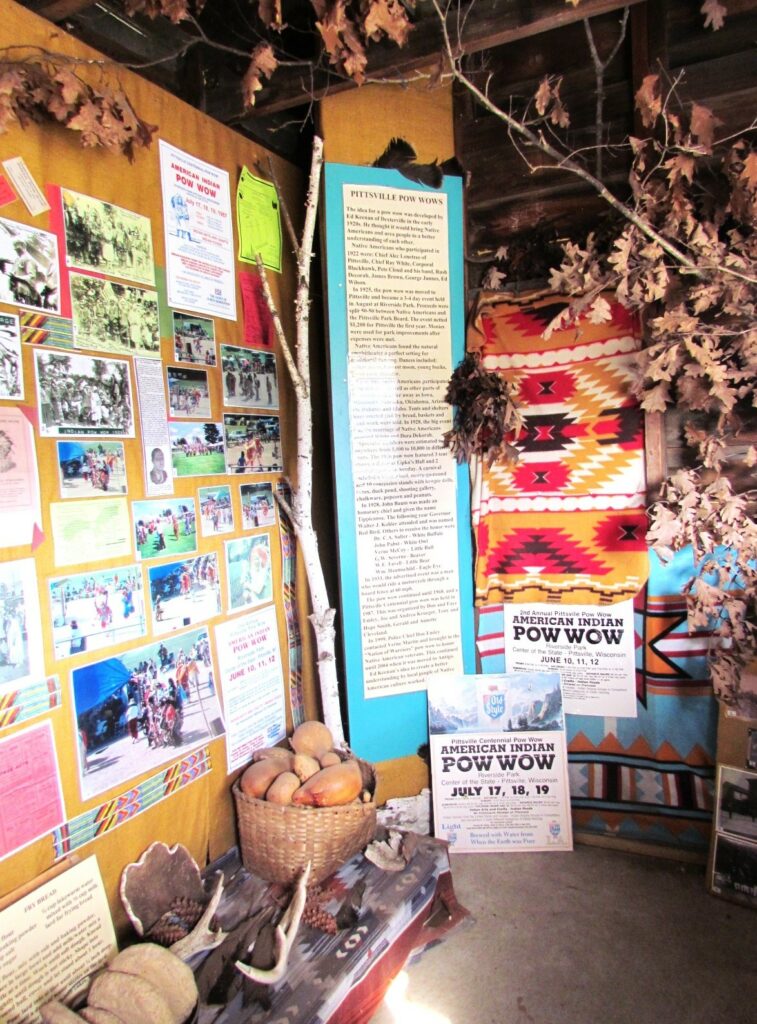
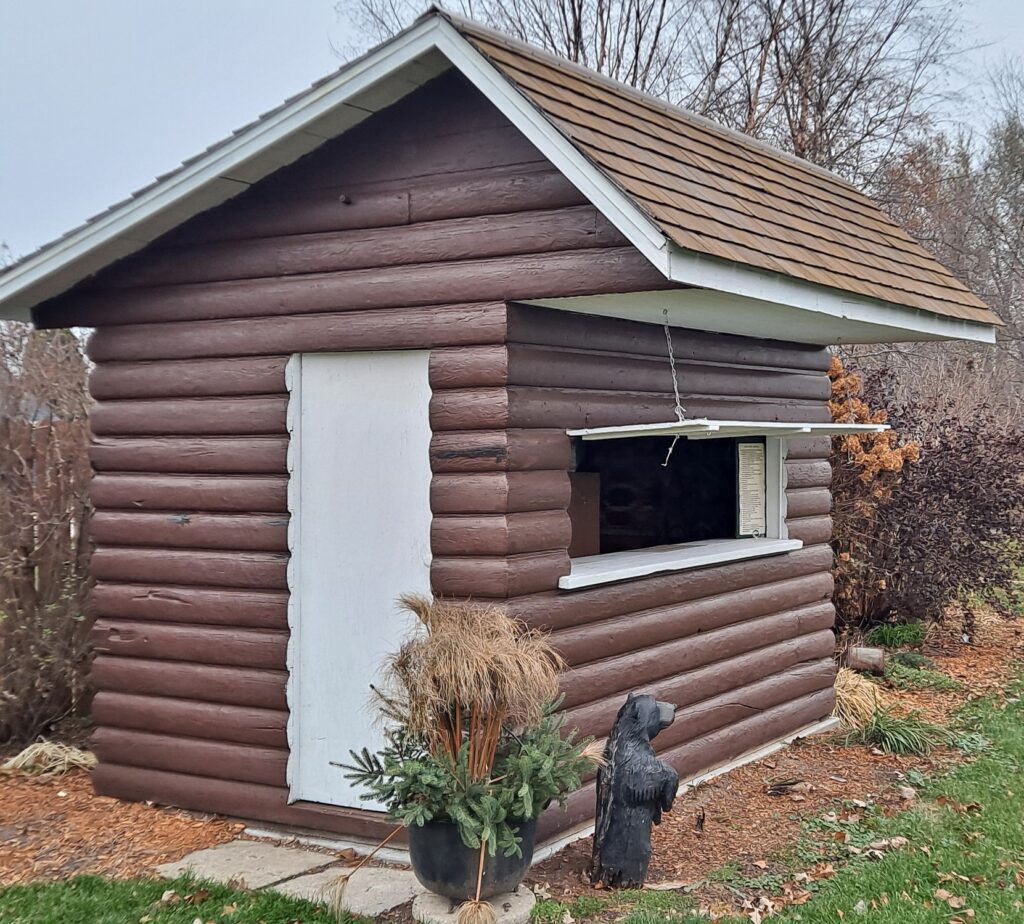
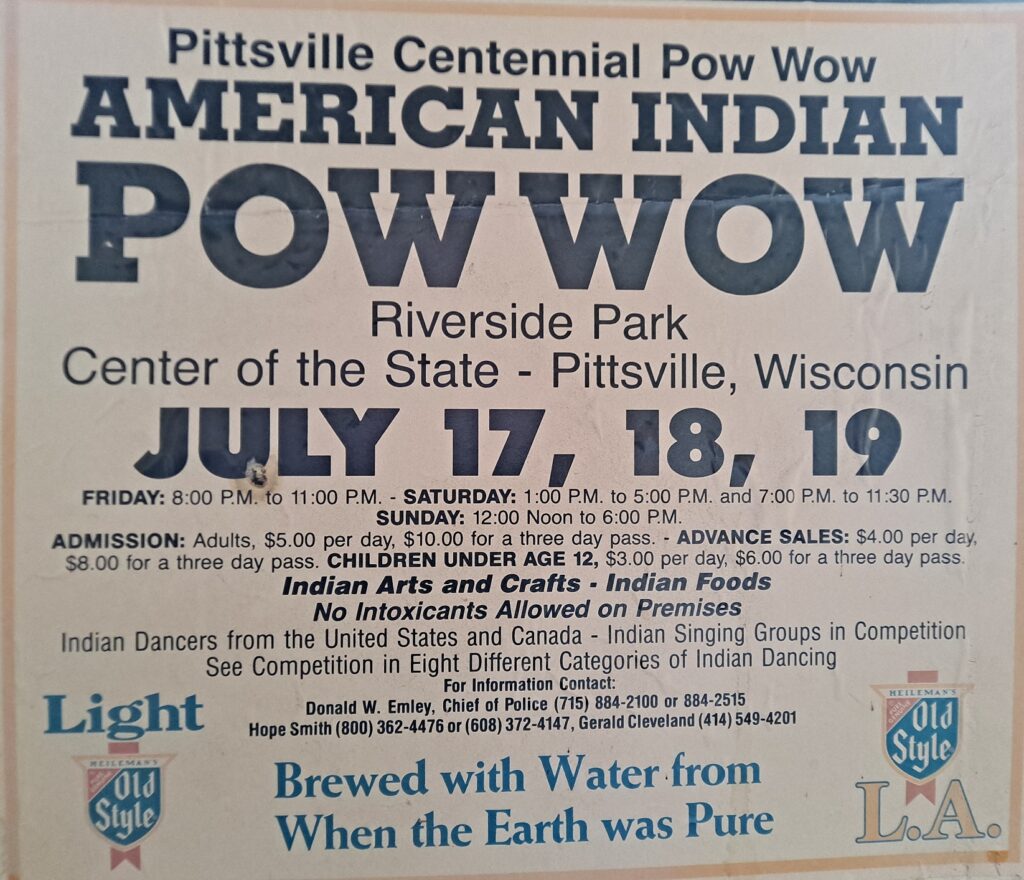
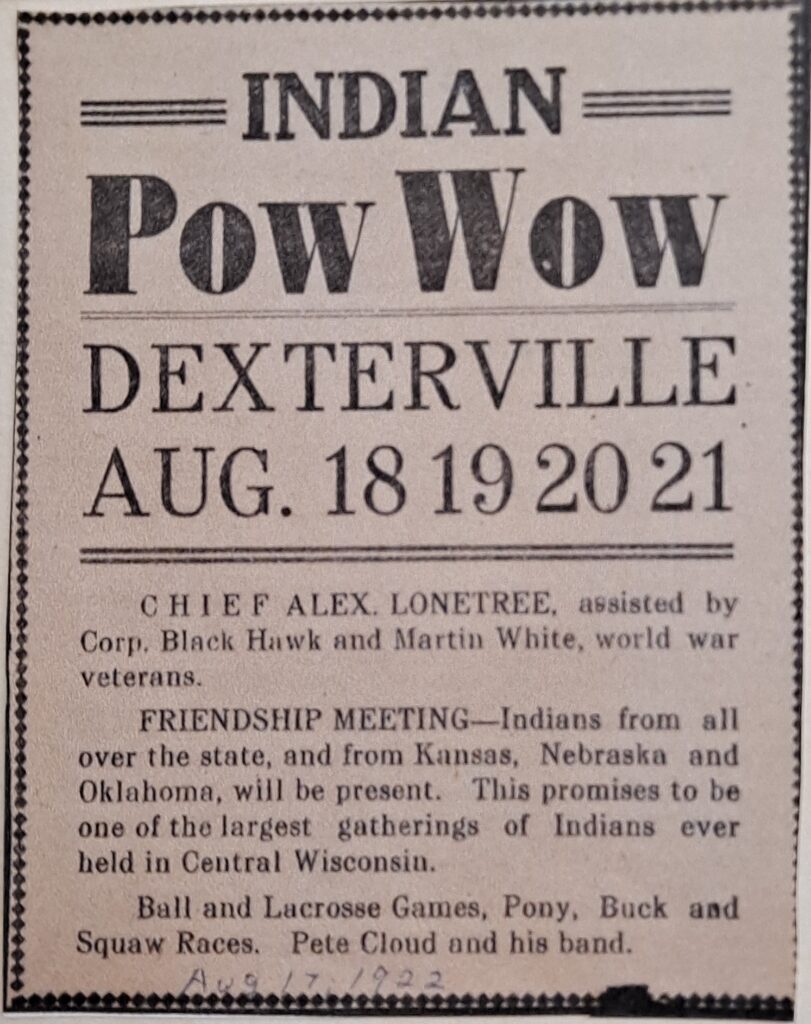
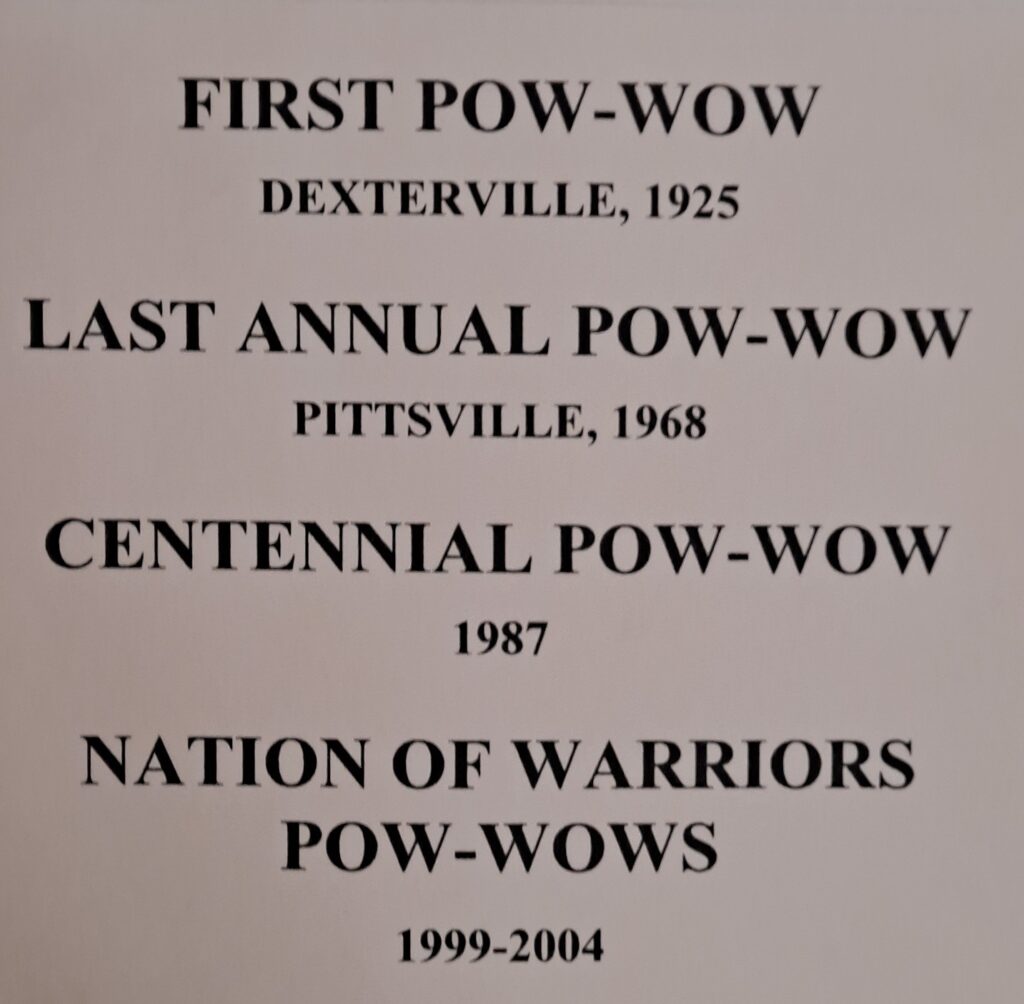
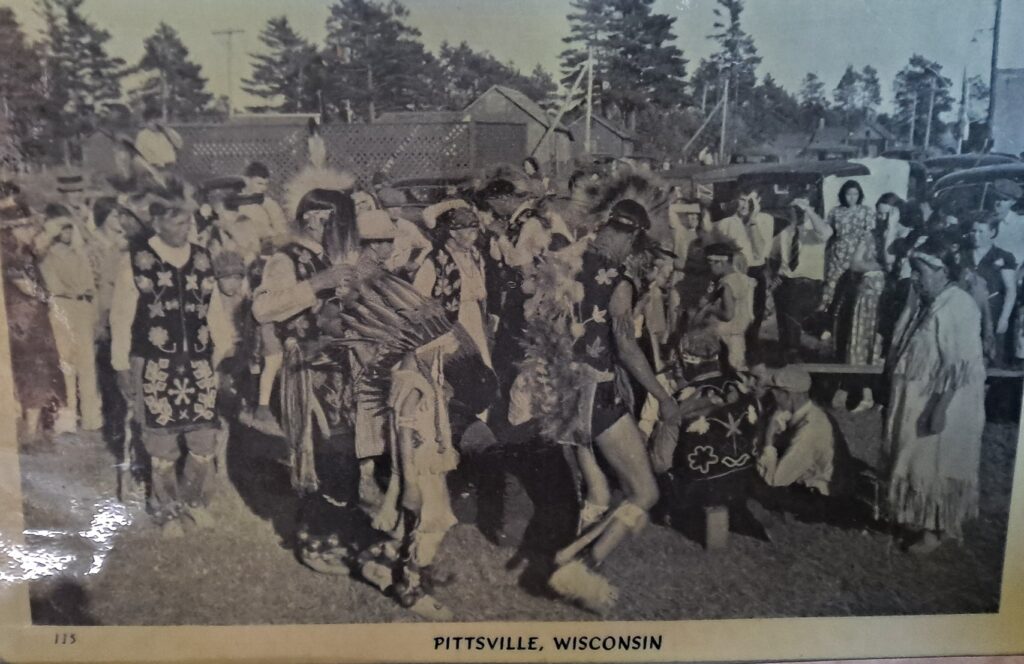
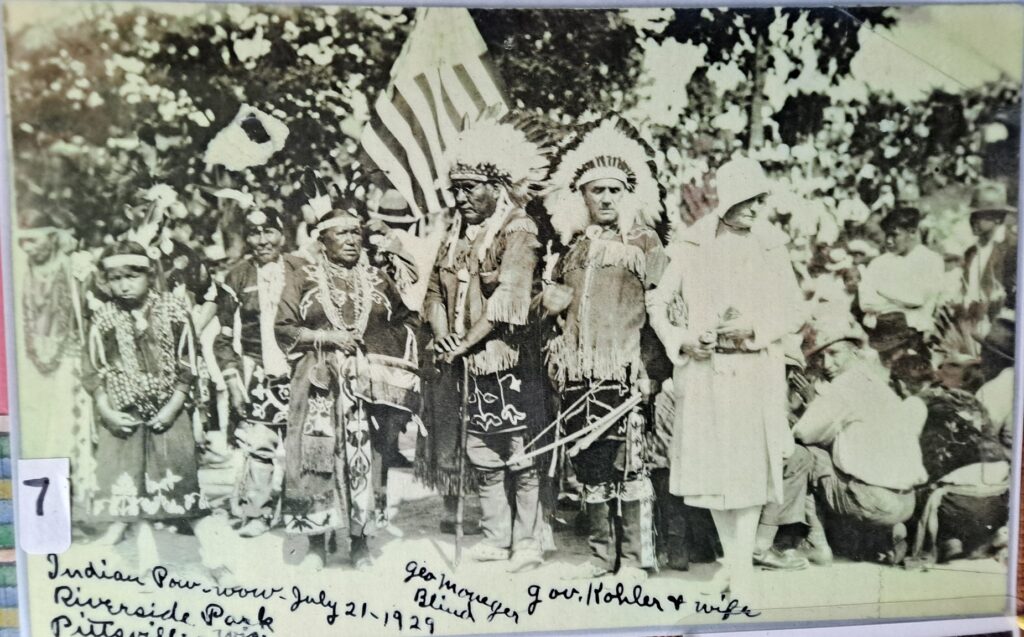
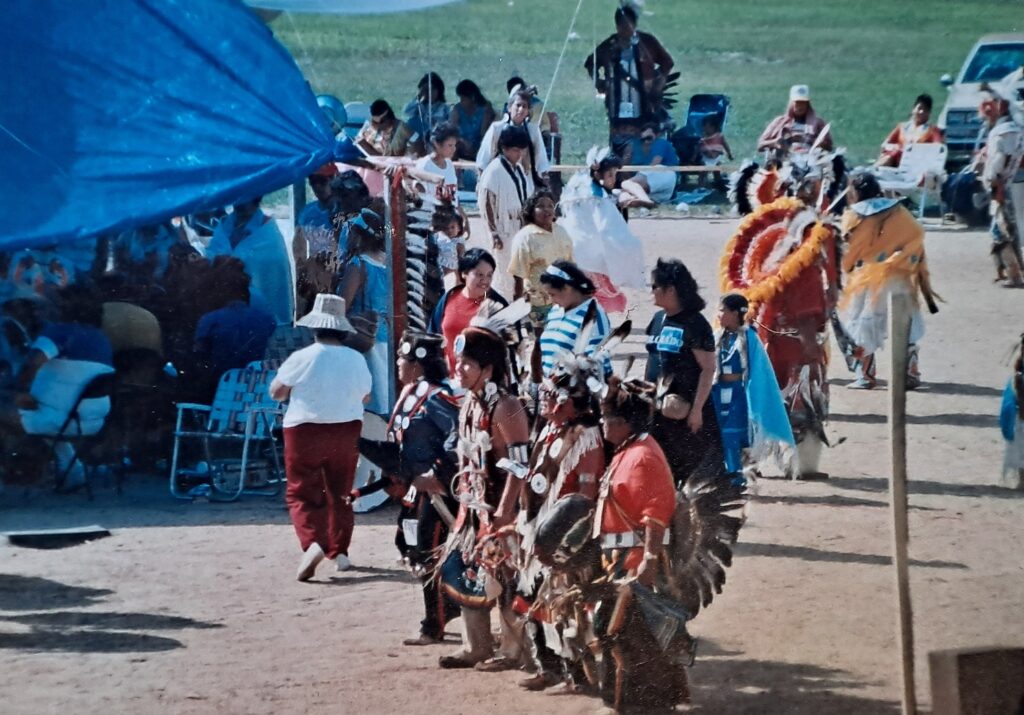
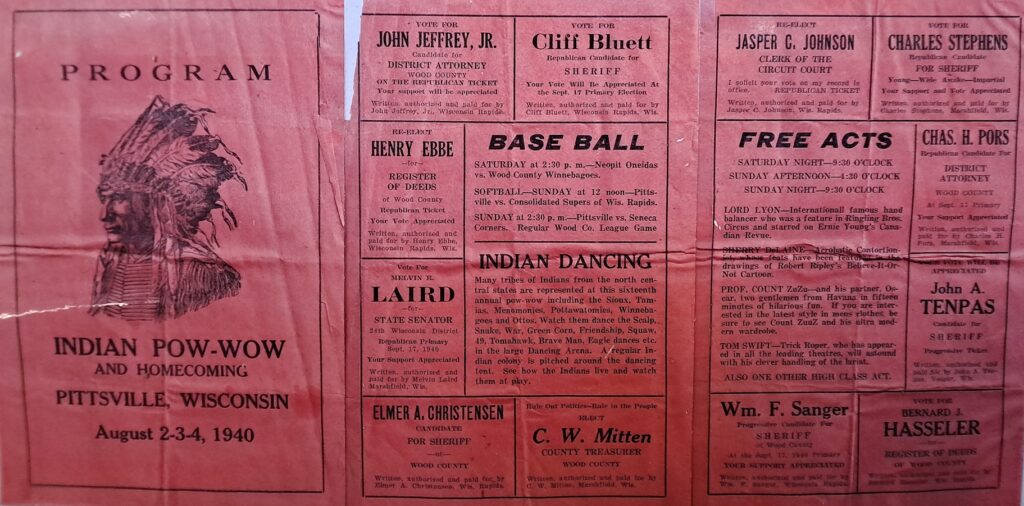
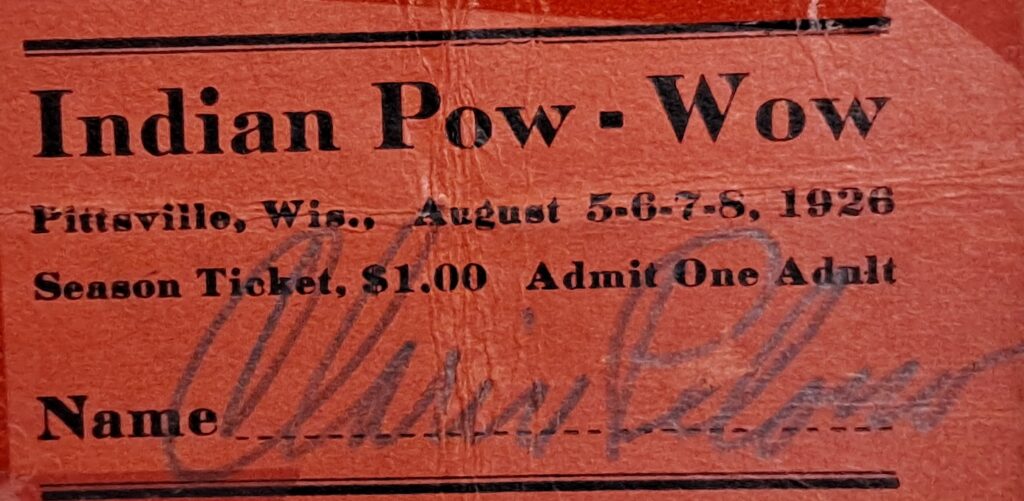
1The spelling of pow-wow is varied. Although you will find that in dictionaries it is spell as a single word (powwow), the word can also commonly be spelled as two words (pow wow) or hyphenated (pow-wow). It is often spelled differently even among Native Americans on their own documents. We have chosen to spell it hyphenated because that is how the people of our local Ho-Chunk Nation spell it, as in the official name of the “Andrew Blackhawk Memorial Pow-wow Grounds” near Black River Falls, WI. You can also see that it is spelled hyphenated on the official plaque celebrating the listing of the grounds in the National Register of Historic Places.
2Paraphrased from Encyclopedia Britannica
